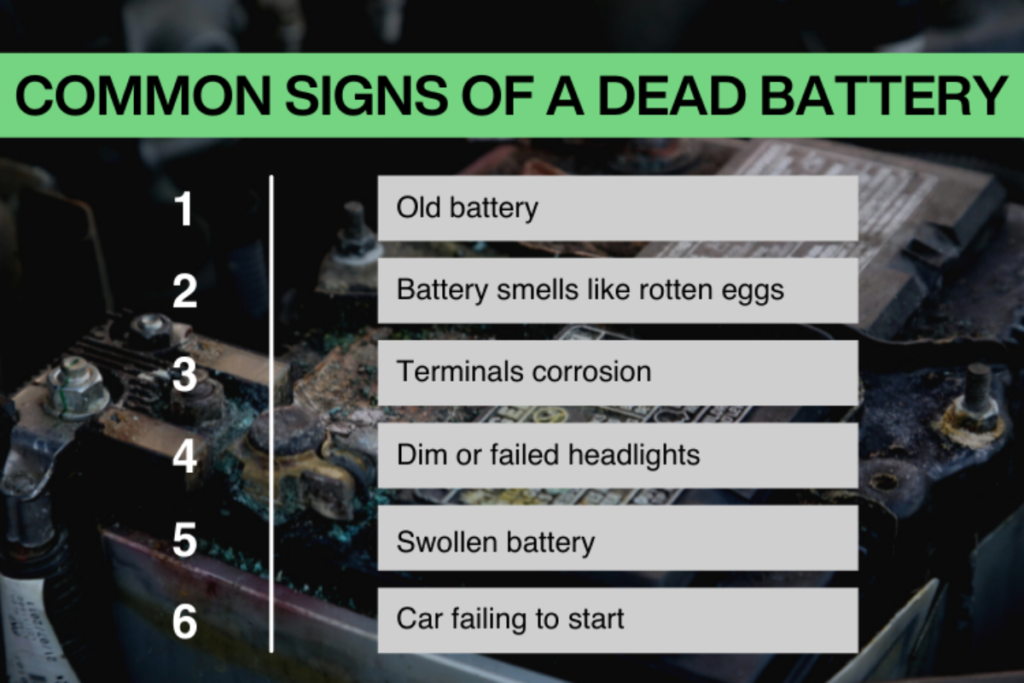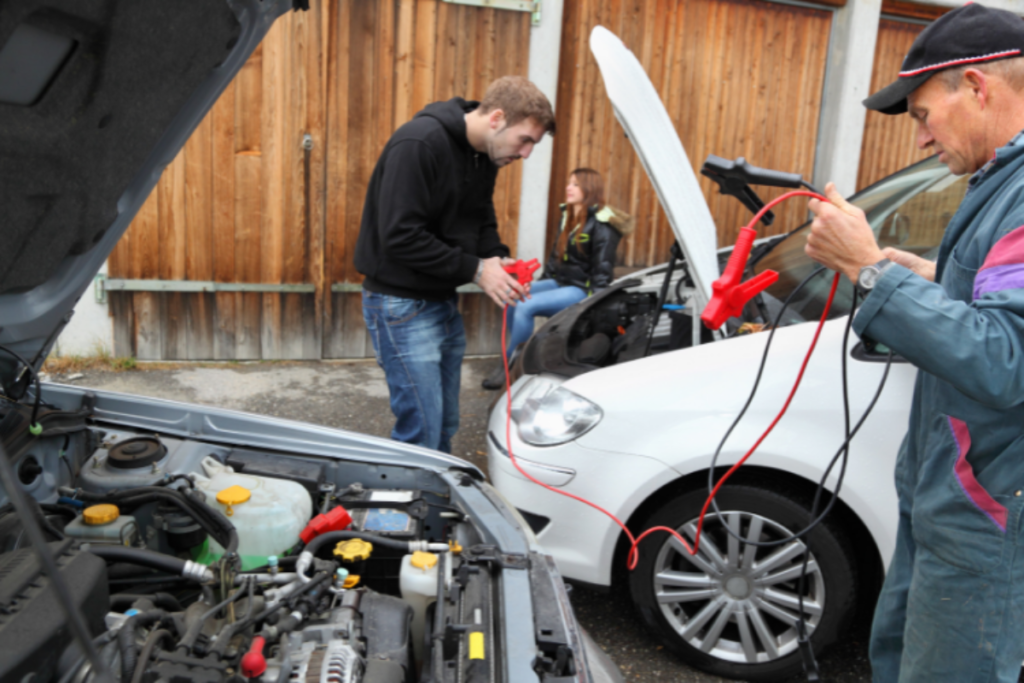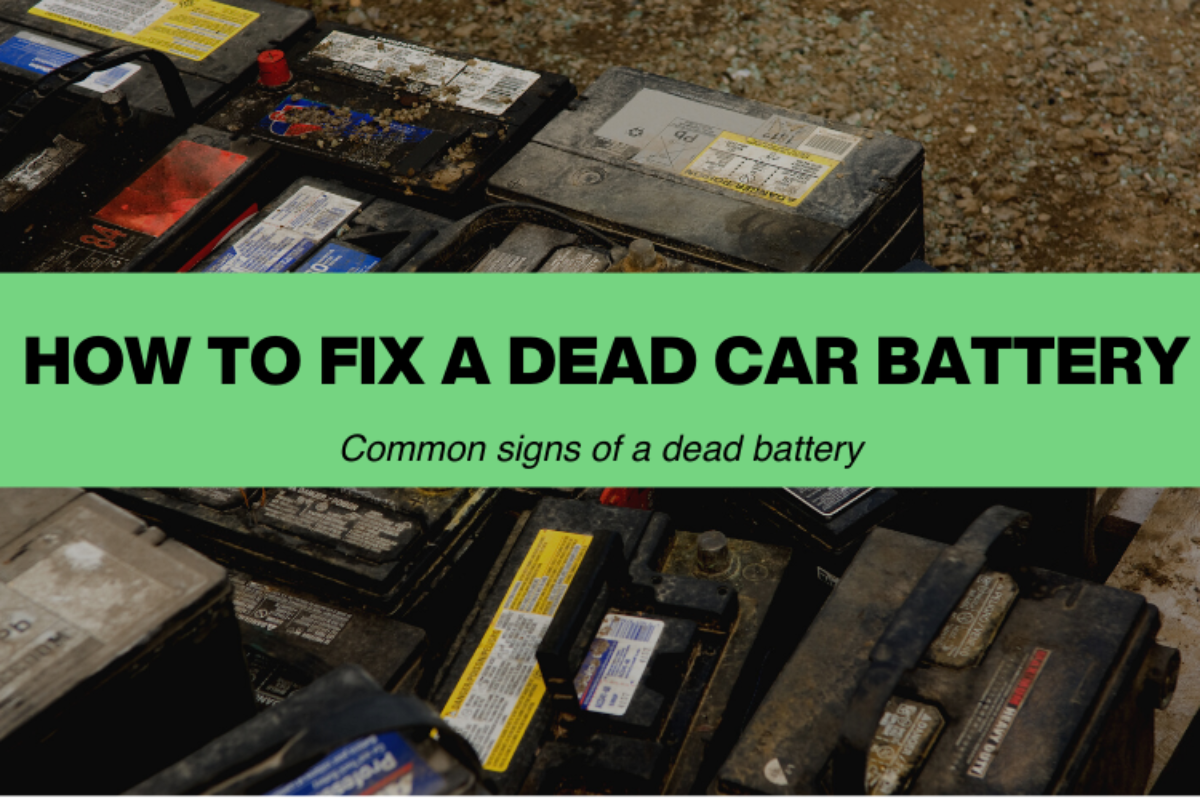Do you have a dying or dead car battery? Here is how to fix a dead car battery. Learn more on how to maintain your car battery for a longer lifespan.
Ever had a dead car battery issue? If you are a car owner, this is a problem you must have come across.
Although cars are designed to constantly charge their batteries for continuous power, some instances can be different. Whenever you have a dead car battery, the situation can be disappointing since it can get you stranded in the middle of nowhere. In some cases, it can be completely dead, and in others, just weak.
However, in both cases, unless you know how to make a fix, you will be stranded. Here are ways to fix a dead car battery.
Common Symptoms of a Dead Car Battery

There are several symptoms of a dead car battery. These are symptoms that may depend on the condition of the battery.
1. Old battery
A car battery is not designed to last forever. As a result, it will age with time. With an average battery having a lifespan of 4 to 6 years, performance drops.
The battery will not be able to start the car. In many cases, the battery will fail slowly with hard starts and finally fail completely. For such a situation, the only solution is to replace the battery.
However, certain measures can be taken while using your car battery to extend its life by ensuring proper maintenance. By visiting Battery Globe, you will learn more about car battery maintenance.
2. Battery smells like rotten eggs
If you notice your battery producing a smell like rotten eggs, then know it is dead. This is caused by lead-acid batteries that have sulphuric acid (H2SO4) and water. As the battery charges, it can produce H2S, which has a rotten egg smell.
As a result, when you notice such a smell, it means the battery is dead. It also means that the acid has started leaking out and forming hydrogen sulfide gas.
3. Terminals Corrosion
A sign of corroded terminals on your battery is another sign of a dying or dead battery. For this, you will notice either a white or blue powder on your battery terminals.
As corrosion builds up, it shows a weakening battery. Due to this deposit, the car will have difficulty starting and finally fail completely.
4. Dim or Failed Headlights
Headlights in cars also require power. Whenever a battery is low in power, it will not be enough to power the headlights; hence you get dim or no light at all.
A battery that can’t power the headlights will also not be able to start the engine. If the engine cannot start, and you try turning on the headlights and notice this, then know your battery is dead.
5. Swollen Battery
A swollen battery is a direct sign of a dying battery. The only solution for this case is to replace the battery. In most cases, a swollen battery is caused by a faulty alternator that overcharges it. Whenever this happens, it must be replaced.
6. Car failing to start
A car failing to start is a common sign of a dead or dying battery. If the car won’t start upon turning the ignition key on, then the battery is dead or dying, and it cannot provide enough power.
How to fix a dead car battery
Whenever you have a completely dead battery, there is no way of reviving or fixing it. You must replace it. However, whenever you have a dying or weak battery, there is room for a fix.
The following discussed methods will help you fix your dying or weak battery for a short period.
1. Use a trickle charger

This is an easy way, but you must be cautioned that it will take a long time before your dead battery is charged. When using a trickle charger, it will take up to 48 hours for the battery to be fully charged. This is because the charger produces just 1-2 amps.
However, the advantage of this slow charging is that it protects the battery from overcharging or overheating.
Steps.
- First step is to turn off your car.
- Select a good parking spot without disturbance since you cannot move the car once the process begins. It is good to have the car parked in a garage where there is ventilation and no rain. Note Better: During this process, there is the production of excess hydrogen gas. Hence good ventilation is required. When hydrogen gets concentrated in an enclosed area, it can easily explode. Make sure the ventilation is good enough.
- Find the ground section. It will be a bare metal part of the frame attached to the engine block or chassis. It can also be a large bolt.
- Next is to attach cables. Make sure you identify positive and negative terminals well. Attach red cable on the positive and black cable to the ground position. Do not attach the black cable to the negative terminal at all.
- Check again to ensure the connection is right. Now plug in your charger and then put the charger “ON” to start charging.
- Also, check your charger’s display to ensure it is charging.
2. Jumpstart
2.1 Jump-start using another car

Preparation
- Get a second car and jumper cables
- The cars should NOT touch each other
- Ensure all the engines are off
Process
- Attach the red cable on the positive battery terminal of the Dead Battery
- Attach the red cable to the positive battery terminal of the GOOD battery
- Attach the black cable to the negative terminal of the GOOD car
- Then attach the black cable on a metal piece that serves as the negative on the BAD car. Avoid attaching the black cable to the negative terminal of the battery as it may lead to an explosion
- Start the GOOD car engine
- Now, wait for between 1 and 2 minutes
- Go ahead and try starting the engine of the BAD car
- Now, disconnect the attached cables. Make sure to disconnect in reverse order of how you connected.
- Keep the car that had a bad battery running for up to 20 minutes to charge it.
For visual illustrations of this process, watch this YouTube video.
2.2. Jump-start Using Portable Jump Starter
There is no huge difference between this step and using another car to jumpstart. However, for this one, there is more convenient since you can have the portable jump starter in the car.
Here are the steps to follow.
- Ensure the jump starter, as well as the car, are off.
- Find the terminals of the battery.
- Connect the Red cable to the battery’s positive terminal
- Connect the black cable on the grounded metal part, engine block, or car frame.
- Turn your jump starter on and start the car.
- Let the car run for a few minutes.
How to maintain your car battery
A good battery is crucial for any car. One must make sure they take care of their battery to extend the lifespan. Here you will find all the tips to follow to make this happen.
Regularly clean the terminals and apply a dielectric grease or anti-corrosion agent. This will prevent corrosion on the battery terminals.
- Make sure you regularly check the electrolyte level and top up with distilled water when low.
- When the car is not running, make sure to turn off accessories and unplug any appliances.
- Do not let the car idle for long without driving. Driving regularly to charge the battery.
- Check your battery voltage often and ensure it is 12.6 volts
- In case you do not use it for long, attach a trickle charger.
Conclusion
For you to understand whether the battery is dying or dead, you must look for the above-discussed symptoms. They will help you know whether you need to fix or replace the battery.
The discussed methods on how to fix dead car batteries will work on dying batteries only but not dead ones. Make sure you maintain your car battery well to extend its lifespan.
